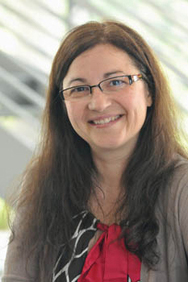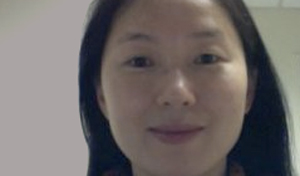The Condensed Matter & Surface Sciences Colloquium series presents Dr. Tijana Rajh, of Argonne National Laboratory, on Thursday, Oct. 10, at 4:10 p.m. in Walter 245.
Rajh will address “Electroactive Biocomposites: From Nanosurgeons to Energy Gradient Architectures.”
“Semiconductor photocatalysis using nanoparticlate TiO2 has proven to be a promising technology for use in photocatalytic reactions, in the cleanup of water contaminated with hazardous industrial by-products, or as a photoactive material in nanocrystalline solar cells,” she says in her abstract.
“Herein we investigate the use of nanoparticles for control and manipulation of biomolecules within the living cells. Metal oxide semiconductor colloids are of considerable interest because of their potocatalytic properties and resistance against corrosion. We have found that reconstructed surface of metal oxide nanoparticles differs form the bulk by the presence of highly reactive under-coordinated surface. This can be viewed as a curse or as an opportunity.
“The coordination sphere of the surface metal atoms is incomplete and thus traps light-induced charges, but also exhibits high affinity for oxygen-containing ligands and gives the opportunity for chemical modification. Manipulation of the surface active ligand covalently linked to TiO2 nanoparticles was found to alter their chemical reactivity. As a result of strong interaction between nanoparticle surface atoms and organic ligands, delocalized bands of metal oxide nanoparticles are electronically coupled to organic linkers, improving their optical properties in the visible region.
“The enediol linkers were used as “leads” that bridge the electronic properties of semiconductors to electroactive biomolecules such as DNA or proteins. Integrated composites that combine the physical robustness and chemical reactivities of nanoscale metal oxides with the molecular recognition and selectivity of biomolecules were developed. DNA and monoclonal antibodies were utilized to direct TiO2 nanoparticles to the specific cells with target molecules. Photoinduced charge separation was than employed to control and manipulate processes within the cells and to alter their functioning.
 “These hybrid TiO2-DNA nanocomposites formed a basis for the development of novel artificial restriction enzymes with high specificity in vtro or in vivo. Monoclonal antibodies were utilized to direct nanocomposites to disease-associated epitopes and lyse cells affected by the disease while leaving healthy cells intact. Control of chemical processes of biomolecules and supramolecular entities within the living cells was achieved using TiO2 nanocomposites in order to develop new tools for advanced medical therapies.”
“These hybrid TiO2-DNA nanocomposites formed a basis for the development of novel artificial restriction enzymes with high specificity in vtro or in vivo. Monoclonal antibodies were utilized to direct nanocomposites to disease-associated epitopes and lyse cells affected by the disease while leaving healthy cells intact. Control of chemical processes of biomolecules and supramolecular entities within the living cells was achieved using TiO2 nanocomposites in order to develop new tools for advanced medical therapies.”



















Comments